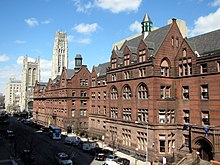
Milton Academy is a co-educational, independent, and college-preparatory boarding and day school in Milton, Massachusetts educating students in grades K–12. The Lower School educates day students and the Upper School educates a roughly even mixture of boarding and day students.

Bank Street College of Education is a private school and graduate school in New York City. It consists of a graduate-only teacher training college and an independent nursery-through-8th-grade school. In 2020 the graduate school had about 65 full-time teaching staff and approximately 850 students, of which 87% were female.
Ethical Culture Fieldston School (ECFS), also known as Fieldston, is a private pre-K–12th grade coeducational school in New York City with two campuses in Manhattan and the Bronx. The school is a member of the Ivy Preparatory School League. The school serves approximately 1,700 students with 480 faculty and staff.
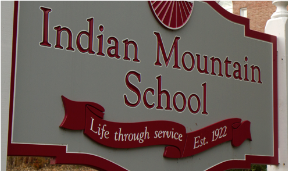
Indian Mountain School is an independent coeducational boarding and day school for children grades pre-K through 9, located on two campuses in Lakeville, Connecticut, United States.

The Beverly Hills Unified School District, abbreviated BHUSD, is a school district based in Beverly Hills, California. It was unified into an elementary and high school district in 1936. Serving the city of Beverly Hills, it consists of one middle school, two elementary schools, and one high school - Beverly Hills High School.
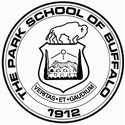
The Park School of Buffalo is a private, co-educational, college preparatory school located in Amherst, New York. Founded in 1912 during the American country day school movement, the institution features lower, middle, and upper schools, serving roughly 290 students from Pre-Kindergarten through grade 12.

Riverdale Country School is a co-educational, independent, college-preparatory day school in New York City serving pre-kindergarten through twelfth grade. It is located on two campuses covering more than 27.5 acres (111,000 m2) in the Riverdale section of the Bronx, New York, United States. Started as a school for boys, Riverdale Country School became fully coeducational in 1972. It currently serves 1,140 students.
A common school was a public school in the United States during the 19th century. Horace Mann (1796–1859) was a strong advocate for public education and the common school. In 1837, the state of Massachusetts appointed Mann as the first secretary of the State Board of Education where he began a revival of common school education, the effects of which extended throughout America during the 19th century.
Green Meadow Waldorf School (GMWS) is an independent Waldorf school located in Chestnut Ridge, Rockland County, New York. It offers parent and child classes, and nursery/kindergarten through 12th grades. The school is accredited by both the New York State Association of Independent Schools and the Association of Waldorf Schools of North America. Founded in 1950, it is one of the oldest of the approximately 190 independent North American Waldorf schools.
Russell Inslee "Inky" Clark Jr. was an educator, administrator, and a key player in the transition of the Ivy League into co-education in the 1960s and diversified student bodies to the present from the 1960s.

Education in New York City is provided by a vast number of public and private institutions. New York City has the largest educational system of any city in the world. The city’s educational infrastructure spans primary education, secondary education, higher education, and research. New York City is home to some of the most important libraries, universities, and research centers in the world. In 2006, New York had the most post-graduate life sciences degrees awarded annually in the United States, 40,000 licensed physicians, and 127 Nobel laureates with roots in local institutions. The city receives the second-highest amount of annual funding from the National Institutes of Health among all U.S. cities. It also struggles with disparity in its public school system, with some of the best-performing public schools in the United States as well as some of the worst-performing. Under Mayor Michael Bloomberg, the city embarked on a major school reform effort.
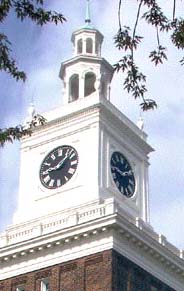
Poly Prep Country Day School is an independent, co-educational day school with two campuses in Brooklyn, New York, United States. The Middle School and Upper School are located in the Dyker Heights section of Brooklyn, while the Lower School is located in Brooklyn's Park Slope neighborhood. Initially founded as part of the Brooklyn Collegiate and Polytechnic Institute, Poly Prep now offers classes from nursery school through 12th grade.

All Saints Episcopal Day School is a co-educational school for students from Nursery to 8th grade. The school is located in Hoboken, New Jersey, and occupies two campuses: the Elementary school and Middle schools are located at 707 Washington Street on the corner of 7th and Washington Streets, and the Early Childhood Center, which is located at 527 Clinton St. on the corner of Sixth and Clinton Streets, houses the Nursery, Pre-Kindergarten and Kindergarten programs. Both campuses boast historic landmark buildings, and include a gymnasium, movement room, library, science lab, art room, assembly space in the church, and private outdoor play yards. There are SMART Boards in all classrooms and networked computers throughout all of the buildings.
Riverdale Local School is a public K–12 school located near Mount Blanchard in Delaware Township, Hancock County, Ohio, United States. The school system is the result of a consolidation of three school districts. The communities of Forest, Wharton and Mount Blanchard comprise the school district which consolidated in 1962. It is the only school in the Riverdale Local Schools district. Their building, opened in 2004, currently houses grades K-12, while the original high school building still stands on campus to act as a centralized office for records, a head start program as well as other school functions.
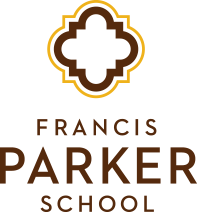
Francis Parker School (Parker) is a college preparatory independent day school in San Diego, California, serving students from junior kindergarten through twelfth grade. Parker was founded in 1912 by Clara Sturges Johnson and William Templeton Johnson, themselves recent arrivals to the West Coast. The Johnsons' nieces had attended the original Francis W. Parker School in Chicago, founded eleven years earlier, and sought to recreate the same progressive education standards at the original institution.
St. Hilda's & St. Hugh's School is an independent, Episcopal day school in New York City. It is located in Morningside Heights on the Upper West Side of Manhattan. The youngest students are beginners, and students graduate when they complete eighth grade.

Darlington School is a private, coeducational, college-preparatory day and boarding school in Rome, Georgia founded in 1905. It serves students from pre-kindergarten to grade 12, and is divided into a Pre-K to 8 division and an Upper School division. The student body represents more than 20 countries each year. The Head of School is Brent Bell, the Upper School Director is Chad Woods, and the Pre-K to 8 Director is Hope Jones.
The Chappaqua Central School District is a K-12 public school district serving students in Chappaqua, New York, Millwood, as well as parts of Pleasantville, and Mount Kisco. The current superintendent of schools is Dr. Christine Ackerman. Chappaqua Central School District is ranked 53rd Best School District in the United States by Niche.
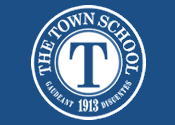
The Town School is an independent, nonsectarian, coeducational elementary school located at 540 East 76th Street on the Upper East Side of Manhattan in New York City.

The Barnard School for Boys was a college prep-school founded in 1886 by William Livingston Hazen.



